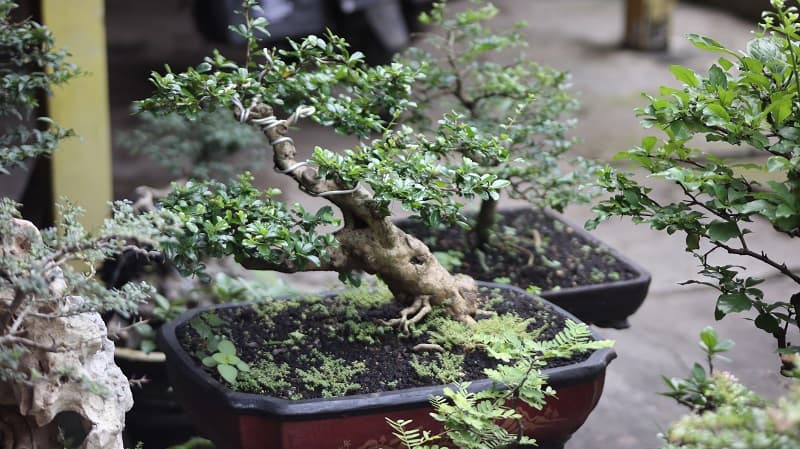
Bonsai plants are ornamental trees or shrubs that are grown in pots and artificially prevented from reaching their normal size. This is based on the Japanese art of tray planting, in which miniature trees are grown to mimic the shape of actual-sized trees. Some of the best trees and shrubs for bonsai include the Japanese maple, pomegranate, juniper, jade, bougainvillea, adenium, olive, azalea, cedar and cherry blossom. Bonsai plants require extreme care and attention, and are especially prone to infections and overwatering.
What are the signs of an overwatered bonsai plant?
- The leaves start to fall off in large numbers.
- Soft, black spots on the leaves and stems indicate that the overwatering is severe.
- The leaves turn yellow and the smaller branches become shriveled. This is because the roots are drowning in water and deprived of oxygen, making them unable to absorb nutrients for the plant.
- The roots become black and disintegrate when touched.
How to save an overwatered bonsai
You can save an overwatered bonsai by following these measures:
- See to it that the soil is completely dried out before you start watering again.
- Reduce your watering schedule if you notice symptoms of overwatering.
- Consider switching to a more suitable soil mixture.
- If you notice signs of rotting on the branches, stop watering at once and expose the plant to direct sunlight for three to five days to dry out, and then repot it in new soil.
Bonsai trees are not like most houseplants, and their soil is made up of three different components that work together to regulate the soil’s moisture. Before watering your bonsai, check whether the soil is damp to the touch. If it is wet rather than damp, it does not need watering. Excess water clogs up air pockets in the soil, suffocating and killing the roots. When watering bonsai trees, water thoroughly until the excess water flows out of the drainage holes, then leave the pots to drain for at least two minutes.
What are the biggest warning signs of an unhealthy bonsai?
1. The leaves are yellow or wilting.
This is the most common sign of bonsai health problems. It is not only indicative of overwatering, but also of diseases, underwatering, or too much exposure to sunlight.
2. There are visible spots on the leaves.
Red, black or brown spots on the leaves could indicate a fungal infection. This should be treated at once and the affected leaves should be pruned. You may also treat the plants with a fungicide.
3. There are ragged leaf edges.
Ragged leaf edges could indicate the presence of pests like aphids or spider mites. These pests suck on the plant tissue and will weaken the bonsai trees. Bathe the leaves and trunks with soapy water and remove visible bugs to stop the infestation. You may also have to apply pesticides to eradicate the pests.
4. The bonsai is loose or wiggling.
A loose or wiggling bonsai means it has poor root growth, and bad roots could suffocate the tree. Healthy bonsai trees do not wiggle, since they cling tightly to the soil and remain firmly in place. This health issue could be due to overwatering; you may also try to add bonsai fertilizer to the soil.
5. The branches are drooping or wilted.
Drooping or wilted branches could mean that the soil lacks nutrients and minerals. Apply mineral supplements to perk up the branches. Mold or mildew could also be the culprit, in which case you can apply fungicide to alleviate the problem.
6. The bark is swollen.
Swollen bark could be due to cankers or diseases under the bark of the bonsai tree. This usually happens when the tree has not properly healed after trimming. Cut away the infected parts of the trunk or branches and use cut paste to encourage healing.
7. Off-season loss of leaves or needles.
Bonsai trees that lose leaves or needles in the wrong season could be affected by mold or fungal infections. Act on the problem at once using fungicides, since fungal infections can spread quickly to other plants.
Conclusion
Bonsai plants are lovely to look at and an artistic way of cultivating miniature trees or shrubs. They require special care and attention, however, since they can be susceptible to overwatering. Signs of an overwatered bonsai include yellow leaves, shriveled branches, young leaves falling in great numbers, and soft black spots on the stems or leaves.
Image: istockphoto.com / guntoro guntoro